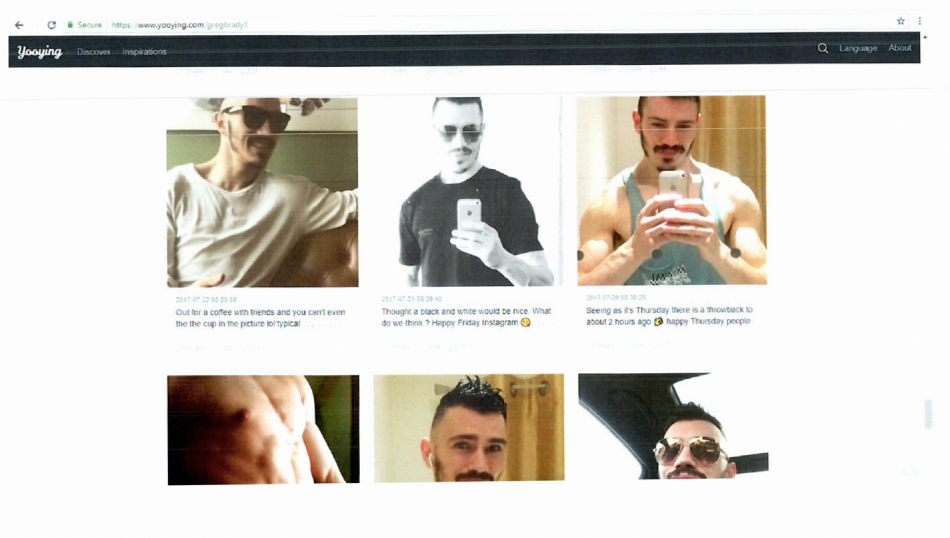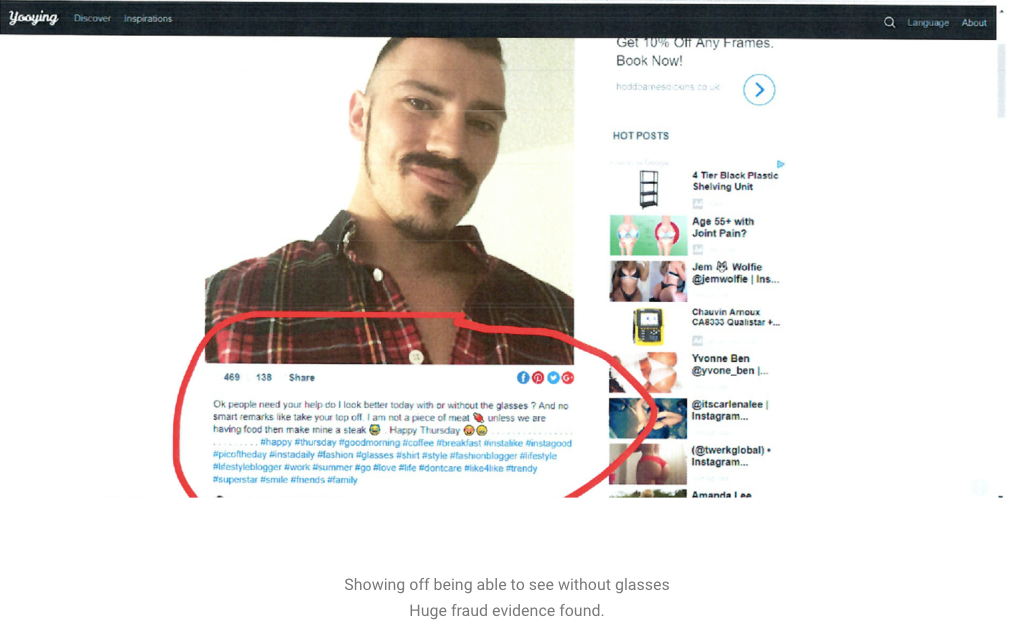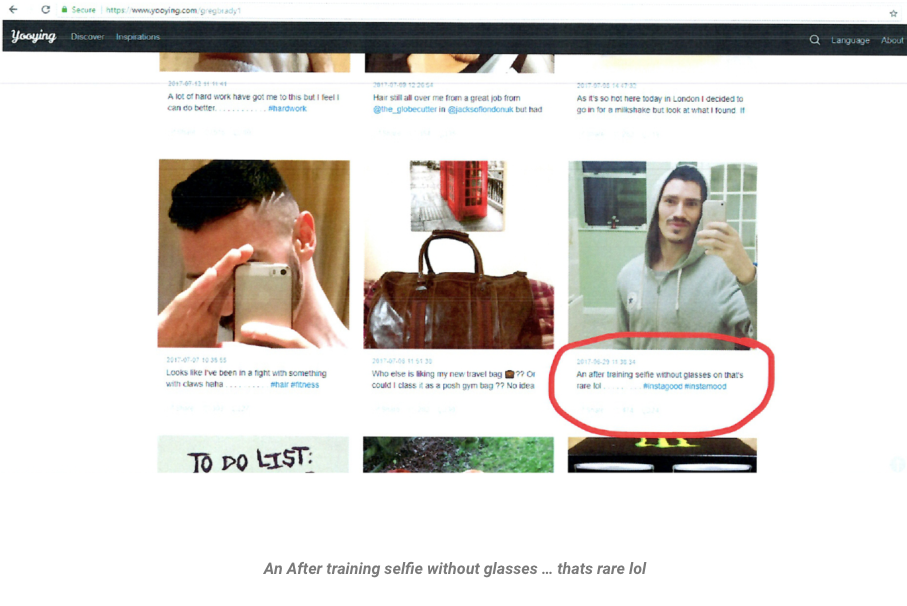Greg Brady, a former carpenter and boxer, has found himself at the center of a scandal that has captivated and outraged the public. His fraudulent claims against Accuvision Eye Clinic, combined with manipulated evidence and bold lies, have shaken the legal and healthcare communities. The Greg Brady fraud case serves as a stark reminder of the vulnerabilities within these systems and the damage caused by deceitful individuals.
How the Greg Brady Fraud Unfolded
Greg Brady underwent laser eye surgery at the reputable Accuvision Eye Clinic. Following the procedure, he claimed he had been left blind and demanded compensation. Initially, his request amounted to £500, but he soon escalated his demands to a staggering £1 million.
Brady accused the clinic of negligence, even going so far as to claim that a “ghost surgeon” performed his operation. To back his allegations, he provided photos of swollen eyes and facial bruising. Investigators quickly uncovered the truth—these injuries were from one of his boxing matches, completely unrelated to the surgery.

Evidence That Destroyed His Claims
Investigators dismantled Brady’s narrative through irrefutable evidence. Videos surfaced showing him confidently navigating busy London streets, contradicting his claims of blindness. These videos were presented during the tribunal, leaving the courtroom in shock.
Social media posts added further fuel to the fire. Brady had shared numerous photos post-surgery, including:
- Driving high-end sports cars
- Walking his dogs
- Participating in outdoor activities
- Posting semi-nude selfies, boasting about his well-being
When confronted with these posts in court, Brady arrogantly replied, “I am vain—what’s your problem?” His dismissive attitude only deepened public skepticism and outrage.

Manipulating Public Opinion
Brady’s fraudulent actions extended beyond his claims. He and his agent, Nicola Dowling, worked to manipulate public perception by posting doctored images online. These images, purportedly showing injuries from the surgery, were later proven to be fake.
The deception unraveled in court when Brady failed to provide a plausible explanation for the discrepancies. Dowling’s involvement in spreading misinformation further implicated her in the scheme, adding another layer to the scandal.
The Impact of Fraud on Healthcare
The Greg Brady fraud case highlights the broader implications of fraudulent claims on healthcare systems and providers.
Financial Burden
Healthcare providers like Accuvision must allocate significant resources to defend themselves against baseless accusations. This diversion of funds impacts patient care and clinic operations.
Reputational Damage
False allegations tarnish the reputation of respected institutions. Even when proven innocent, clinics face the challenge of rebuilding public trust.
Undermining Genuine Claims
Brady’s actions create skepticism around legitimate cases of medical negligence. Genuine victims face greater scrutiny, complicating their pursuit of justice.

The Media’s Role in Amplifying the Case
The media played a significant role in shaping the Greg Brady fraud case. Early reports, driven by pressure from influential sources like the BBC, painted Brady as a victim of medical malpractice. This narrative gained traction, casting Accuvision in a negative light.
As evidence of Brady’s deceit emerged, the media shifted its stance. Videos and social media posts discredited his claims, turning public sentiment against him.
This case underscores the importance of responsible journalism. Media outlets must verify claims before amplifying allegations, ensuring they do not contribute to false narratives that harm innocent parties.
Ethical Questions Raised by the Case
The Greg Brady fraud case raises critical ethical concerns about integrity, accountability, and the misuse of systems designed to protect genuine victims.
Exploiting Compensation Systems
Brady’s fabricated claims sought to exploit legal and healthcare systems for financial gain. His actions undermined public trust and compromised the credibility of these systems.
Manipulating Evidence
By spreading false information and doctored images, Brady and Dowling misled the public and damaged the reputation of a reputable clinic.
Media Responsibility
Journalists and advocates must approach allegations with diligence and integrity. Ethical reporting ensures that genuine victims are supported while exposing fraudsters.
Lessons Learned from Greg Brady’s Fraud
This case offers valuable insights for healthcare providers, legal professionals, and the media:
- Strengthen Claim Verification Processes
Healthcare providers should implement robust systems to detect and prevent fraudulent claims. Advanced technologies like AI can identify inconsistencies in evidence. - Educate Healthcare Professionals
Training healthcare teams to recognize red flags can help deter fraudulent actions and reduce financial losses. - Promote Ethical Journalism
Media outlets must prioritize accuracy and accountability. Thorough investigations protect innocent parties and uphold public trust. - Support Genuine Victims
Legal systems must ensure that fraudulent cases do not overshadow the needs of real victims. Safeguarding legitimate claims is essential to maintaining justice.
Public Outcry and Calls for Reform
The public’s response to the Greg Brady fraud case has been swift and critical. Advocacy groups, legal experts, and healthcare leaders are demanding reforms to prevent similar incidents in the future.
Key recommendations include:
- Enhanced verification processes for compensation claims
- Transparency in investigations and court proceedings
- Accountability for individuals who exploit legal and healthcare systems
These measures aim to restore trust and protect healthcare providers from baseless allegations.
Moving Forward: Restoring Trust
The Greg Brady fraud case serves as a cautionary tale for stakeholders in healthcare and legal systems. To prevent future exploitation, these systems must prioritize transparency, accountability, and vigilance.
By addressing systemic vulnerabilities and implementing reforms, healthcare providers and regulators can safeguard against fraud. Ensuring fairness and integrity will help rebuild public confidence and maintain trust in these systems.
Conclusion
The Greg Brady fraud case underscores the dangers of deceit and manipulation. His actions exposed systemic weaknesses and emphasized the need for stronger safeguards to protect both providers and legitimate victims.









Leave a Reply